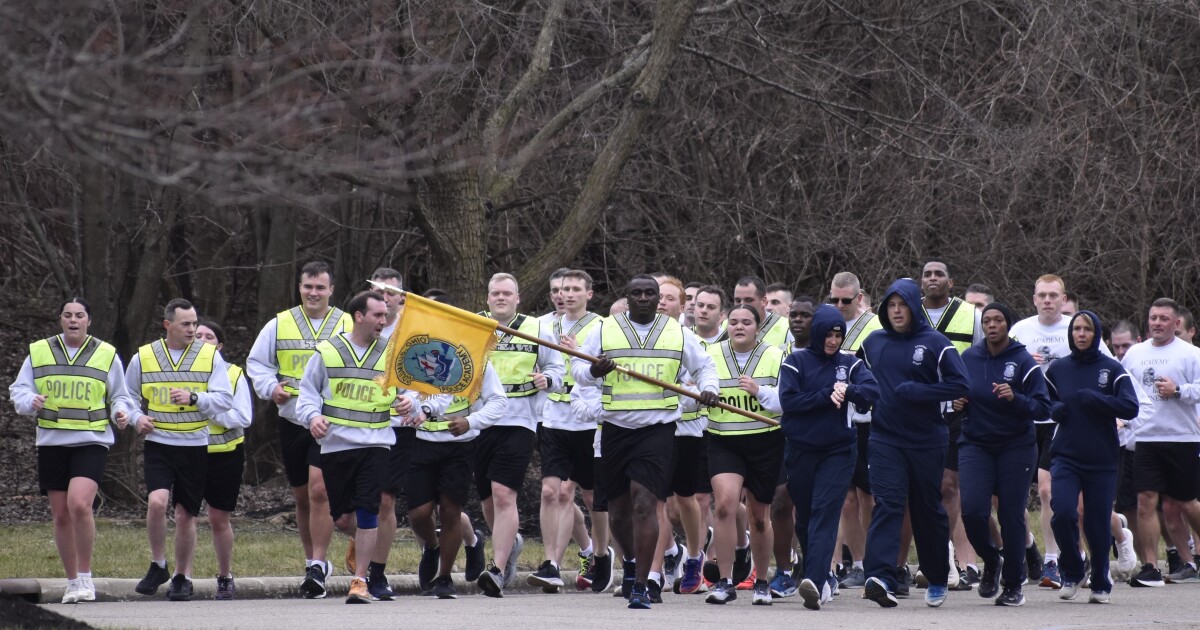
An Ohio taskforce has completed its recommendations for improving the hundreds of hours of instruction police recruits receive before they hit the streets as officers.
The Ohio Attorney General’s Blue Ribbon Task Force is recommending loosened physical fitness requirements, and for police to train with virtual reality technology, in addition to field training. The task force also wants a written firearms test alongside marksmanship tests, as well as other changes.
Attorney General Dave Yost and members of the task force announced the training recommendations in a press conference Wednesday. Yost formed the 11-member task force last fall and asked them to identify areas for improvement in basic and continuing police officer training, determining recommended standards for new officers, outlining expectations for instructors and establishing new training methods.
Yost said the trainings have been relatively static for over a decade and needed an overhaul to fix antiquated practices and modernize police trainings.
“Police training has kind of been at a standstill in some ways for the past decade. We’ve added things, responsively, during my administration, prior administrations… But the substance was largely the same, body of knowledge, the same body of skills,” Yost said.
Ohio Peace Officer Training Academy Executive Director Tom Quinlan announced dozens of hours dedicated to learning how to control a radar gun and other trainings would be diverted as part of one recommendation. He said the task force wants to add two days worth of training in communication and an extra day for assessing active threats and critical decision making.
“Specifically how to talk with people, how to read body language, how to not escalate situations, to de-escalate situations. Communication has become a real key piece that we found to be missing in the standard training for peace officers,” Quinlan said.
On firearms, Quinlan said the taskforce is proposing a written test, in addition to a marksmanship test on the firing line for officers.
“They show, they demonstrate they can hit the target accurately. The problem is there’s no application of law, federal state or local law into that firearm training,” Quinlan said.
Quinlan said the written test covers when officers are allowed to use weapons, how the laws apply to what serious physical harm is, what to do to render aid and other issues. He said he also recommends agency-specific policies be added to the written tests.
Yost said there is only so much officers can learn out of a book, but putting them in field training and possibly making mistakes is a problem that could be alleviated by adding virtual reality training.
“Virtual training, just like for our fighter pilots and other specialty elements in the military… the training can be greatly enhanced by using virtual reality. When the decision goes the wrong way, the real world consequences don’t follow,” Yost said.
Quinlan said to help recruit and retain more people, they are also recommending less strict physical fitness requirements. This would mean three standards on the amount of push ups, sit ups and the time to run a half mile would be loosened.
“We see that people typically pass two of the three standards. If they fail on all three, then there’s another issue we address. But when they’re only failing one and they have two chances, then they have to repeat an entire academy,” Quinlan said.
Quinlan said now officers can pass two of three recommendations and if they’re deficient in one of the three categories and they meet it by a 75% standard — like a 30-second buffer on a run — that allows them to still function as a police officer in Ohio and graduate.
The other recommendations include:
- Amending the curriculum to reflect contemporary police services.
- Establishing certification levels to reflect an officer’s training and experience.
- Creating a Tactical Patrol Officer Program.
- Developing integrated lesson plans across training platforms.
- Expanding annual firearms qualifications.
Yost was asked by reporters about whether current officers will be retrained on these new recommendations. He said officers that are currently on the job will not have to go back and redo their basic training, but could potentially be included in the 24 hours of mandated annual training for all officers.
“Most of the medical professionals have continuing education, social work as continuing education. We want the same kind of requirement for law enforcement,” Yost said. “And all of our active 31,000 or so law enforcement officers in Ohio will, in fact, be impacted by some of these things that have been rolled out today that you heard.”
Yost said some of the recommendations will have to be approved by the Ohio General Assembly and Governor Mike DeWine by the end of the year in order to be implemented.
